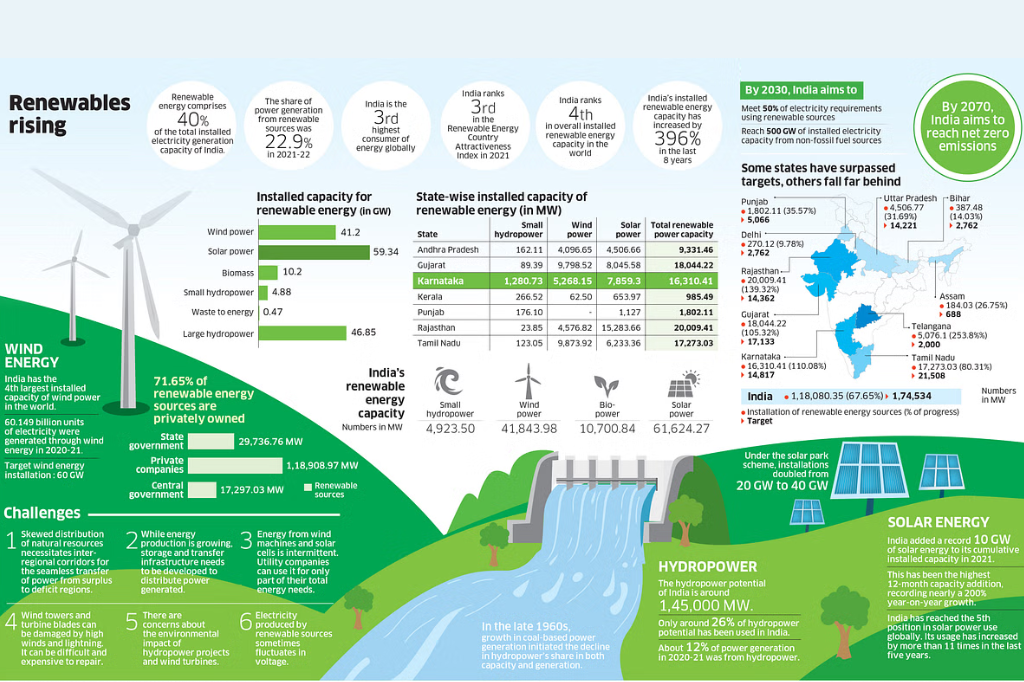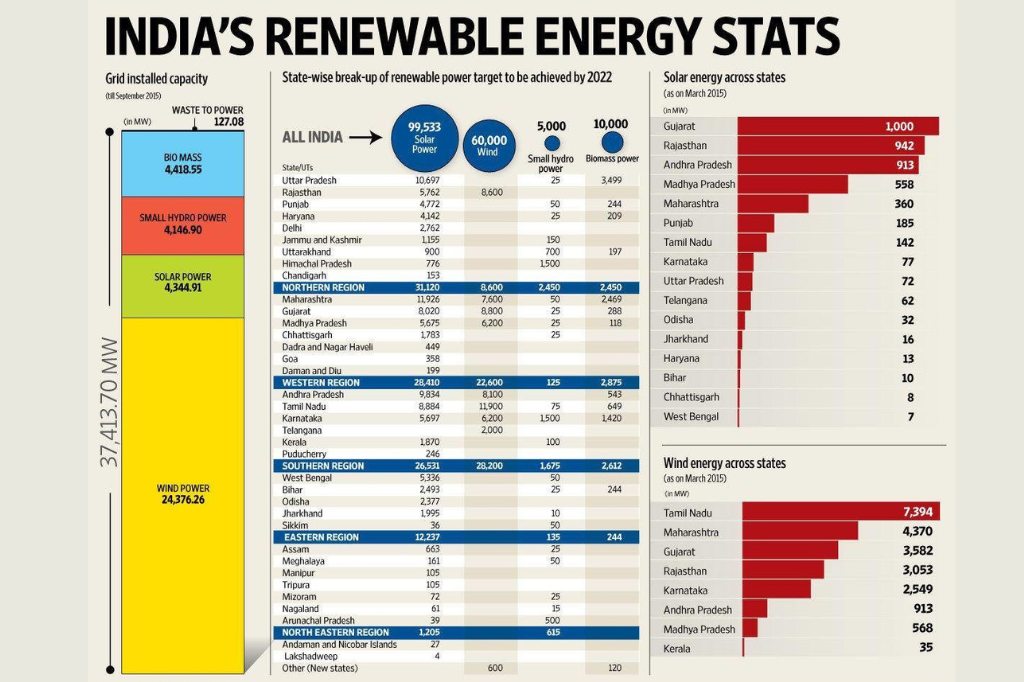
How Renewable Energy Sources Can Transform Our Cities?
Human population is increasing faster and faster, and renewable energy sources are decreasing with more speed. On the expansion of densely populated mega cities, issues relating to environmental degradation, air and water pollution, and a massive leap in energy demands are becoming ever more critical. Conventional fossil fuel reserves, the importance of renewable energy sector, can no longer be a sustainable source of energy.
Here’s where the tide is turning: renewable energy sources will help in revitalization of renewable energy in cities, eventually leaving the door for a brighter, cleaner future. The change of focus to sustainable solutions such as solar panels, wind, geothermal, and hydropower offers the biggest opportunity to transform the urban environments into an ecosystem friendly world. Such a transition will not only be aimed at protecting the environment from global warming and air pollution, but also at fostering importance of renewable energy and resilience of urban renewable energy, which will allow them to be more responsible for their environmental impact and promote sustainable development.
How can renewable energy benefit the environment?
Benefits of solar power energy:

What is the role of renewable energy in smart cities?
Renewable energy in cities for the remarkable percent of 67-76 of energy consumption on a planetary scale, and, surprisingly, a considerably higher portion carbon dioxide emission. This mean 2050 is really a realistic target as solar, wind, hydro, biomass are the main sources of energy.

There is no transition to talk about but the one of saving the planet and making the cities repairable and sustainable. Energy-efficient solutions are crucial to:
- Combatting climate change: Low-carbon solutions have become the foremost importance of renewable energy to avert the detrimental effects of climate change.
- Improving air quality: The filthy air in cities, such as smog and soot, becomes a thing of the past through the exploitation of renewable energy sources like solar and wind power as they not pollute the cities at all.
- Ensuring energy security: The shift to other power sources beside fossil fuels, allowing for less reliance on the markets fluctuations and the geographical instability.
- Lowering energy costs: While the renewable energy sources continue to advance their costs get more in line with the costs of the conventional power sources encouraging solar panel suppliers to offer cheaper invoices for homeowners and businesses.
What are the renewable energy sources in cities?
Fortunately, renewable energy in cities have a diverse range of renewable energy sources at their disposal:
- Solar Panel Energy: PV systems, solar panels, and others are being frequently selected for vegetable growing and water heating. As they are conveniently located near consumers in urban renewable energy, the transport of energy will not require as much as when the renewable energy sources are farther away. Another advantage is the importance of renewable energy during extreme weather events.
- Wind Power: Although wind power penetration into the urban renewable energy is still less than solar applications, there are many technological progress discussing the size issues as well as noise and aesthetics. Urban wind turbines have still gone through research and development, but still those instruments should be regarded as probably the best alternatives of power generation within cities.
- Bioenergy and Waste-to-Energy: Bio-fuels are produced using locally accessed biomass and other waste streams hence; a sustainable renewable energy sources as well as waste concerns can now be addressed. Nevertheless, renewable energy sources for production and trust of population concerning incineration plants we will have a lot of questions to discuss.
- Geothermal Energy: This renewable energy sources is greatly useful, namely, it allows for heating, cooling, and electricity production. Working together geothermal energy power grids at that depth, strong electric power system, could have provide the needed heat and cools at the same time for the whole places whether are urban or rural areas.
What is the main concept of smart grid?
Smart grids are the foundation of the future energy system that is designed for sustainability. The logical systems are composed of power production, storage, as well as consumption. These systems handle poorly dynamically fluctuations of energy and optimization of the direction of energy flow.
- Increased efficiency: Intelligent grids decrease the amount of energy being lost when it is transmitted, but also allow for optimized distribution of energy.
- Enhanced reliability: The shorter the restoration time after interruption the less time of downtime is incurred.
- Reduced costs: Utilities cost savings translate into the lower energy bills that can be passed down to households and businesses.
- Peak demand management: Arranging renewable energy sources distribution by a certain pattern can make sure the grid system is not affected, which could bring electricity bills reduction.
- Seamless integration of renewables: Intelligent grids are the major components of the system that integrates large-scale renewable energy sources.
- Empowering consumers: Smart technology allows real-time electricity consumption monitoring to enable individuals to make reasoned choices and manage their utilization.

What city uses the most renewable energy in India?

Here are some noteworthy examples of renewable energy in maharashtras cities in India:
- Diu: This particular city-island presents a unique position in Indian energy grid with this feather in its capital. The solar park with installed capacity of 9 MW has attributed to this city-island achieving complete Harold during daylight hours. The accomplishment would not have been achieved without the great work done by the installation of the commercial solar panels on the roof of the buildings in the city for renewable energy sources.
- Pune: By the end of 2019, an industrial hub here achieved the maximum rooftop solar panel capacity (130 MW) among all urban renewable energy of India, with a substantial part perhaps being used by industries. Pune solar adoption is a mirror of the commercial solar panel success. The companies in Pune have come to realize that installing renewable energy sources not only promotes the environment but also decreases their cost.
- Rajkot: This town has a statute which makes rooftop solar PV systems obligatory in commercial buildings, stipulating that they should be installed, thus encouraging commercial use of solar panels. Rajkot policy ensures that new building businesses will be provided with the renewable energy sources that will enable them to generate clean energy automatically resulting in them to have less dependence on the traditional grid which in the end contributes towards a goal of sustainable energy among its people.
Conclusion:
Renewable energy is no longer a dream for the future; it’s the essential vehicle that might bring us and our metropolises to understand a life in a more smart & sustainable, healthy, and resilient environment. By ruling a mixed spread of renewable energy sources of energy, deploying smart grid technologies, and framing great vision, renewable energy in cities will perform a path wherein the future will be brighter for many generations.


